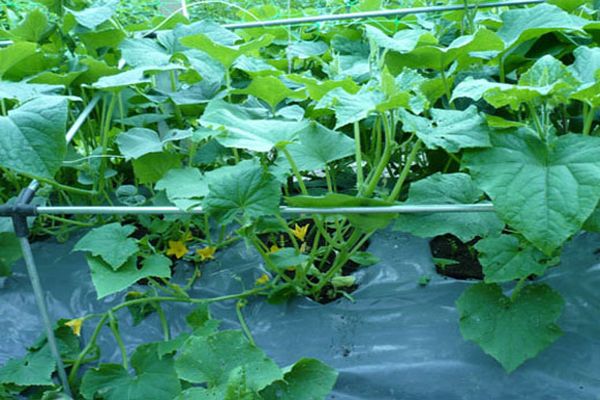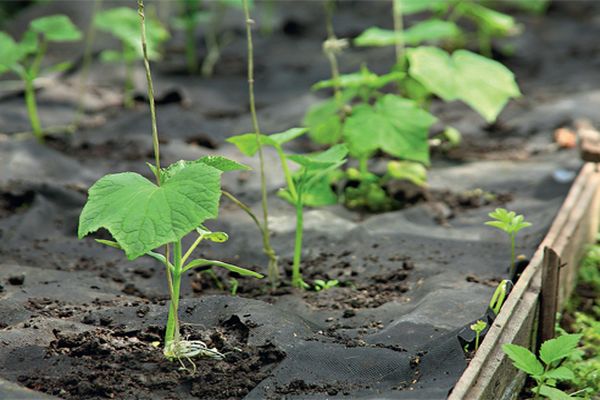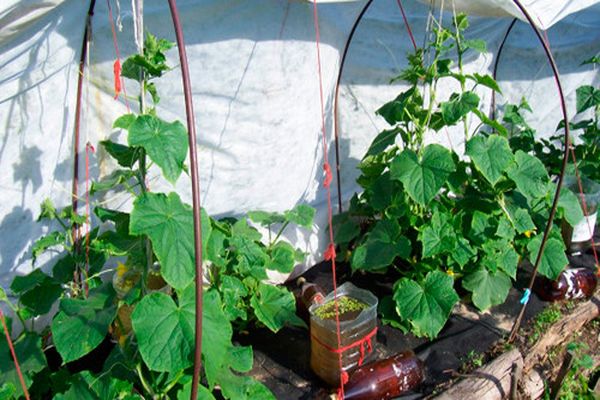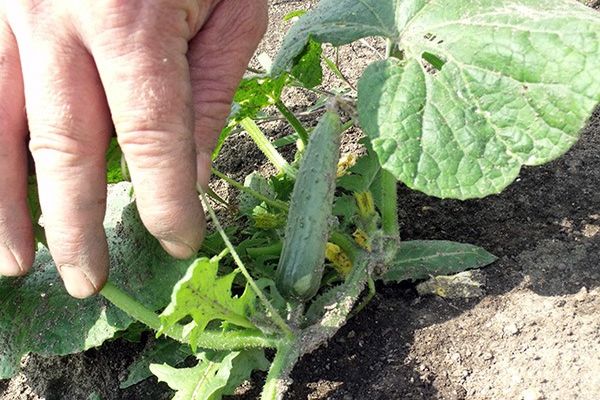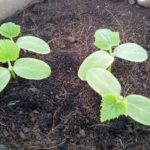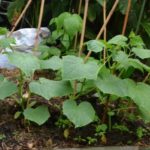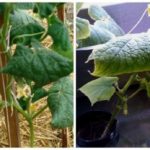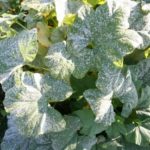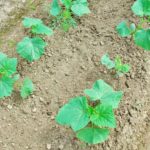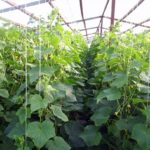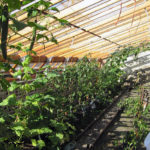The approaching summer season is a signal to think about ways to grow vegetables in your garden plot. A good harvest can be obtained by growing cucumbers under agrofibre. This culture is quite capricious, therefore, in order to minimize negative phenomena, it is customary to use a covering material with special properties - spunbond. Thanks to this technology, growing cucumbers has become possible even in regions with a cool climate.
Types of spunbond
Agrofibre is a truly irreplaceable material for summer residents, because it is what makes it possible to create suitable conditions under cover for many types of crops. Its correct use will help maintain productivity and accelerate plant development. For more than 15 years, this material has been helping vegetable growers obtain excellent harvests, being an excellent alternative to polyethylene.
Surprisingly, the material, which looks so much like thin fabric, actually consists of polyethylene fibers and exhibits much better qualities. This explains its fine fibrous structure. Spunbond comes in different types:
- intended for open ground: the color of this fabric is white, the density is up to 30 grams per square meter;
- used in greenhouses and greenhouses: white material, the density of which does not exceed 60 grams per meter of area;
- used for mulching: the color of this material is black, the density, as a rule, is not lower than 50 grams and not higher than 60 grams per square meter.
Recently, vegetable growers have had the opportunity to use two-color material. It can be of two options:
- Black and white fabric. Its density is quite high, its main purpose is to mulch vegetable and berry beds. The dark layer is protection from weeds, and the white fabric will save the plant’s root system from the scorching sun and strong winds.
- Red and white spunbond (or red and yellow). In most cases, it is used to protect plantings from bad weather. You can cover vegetable crops with such fabric, as well as fruit trees and flowers.
Depending on what material is chosen, cucumbers can be grown either under spunbond cover or using it as mulch.
Using black material
The black material is very dense, so it is best used for mulching the soil. Plants, including weeds, do not grow under such material. This allows you to create a climate in the substrate that is optimally suited specifically for cultivated plants.
In the process of planting cucumbers on film without weeding and hilling, black material should be spread on the bed, the required number of holes should be cut in it and seedlings should be planted in them, and in some cases, seeds immediately. A sprout can only appear in a hole made; it is almost impossible for young shoots to break through the spunbond.
The lack of sun is the main reason why no other plants can grow in other places.
Water and air penetrate perfectly into the soil through the material, which helps create an ideal microclimate in the substrate. Plants are not afraid of rot and mold.
It is important that when using the material, the fruits of planted cucumbers grow clean. This explains the fact that agrofibre began to be used not only for growing this crop, but also for cultivating strawberries, which can be quite difficult to wash off dirt and sand.
Advantages and disadvantages of spunbond
The material has a lot of advantages in the eyes of summer residents:
- spunbond perfectly allows air and water to pass through to the ground;
- the material is soft, as a result of which it does not injure the plants at all;
- the material is better able to retain heat and repel ultraviolet radiation;
- low cost of fabric;
- ease of use.
The material (agrofibre) should be watered from above, which is very convenient. The film's resistance to damage of various types allows the fabric to be used repeatedly over several seasons. If necessary, spunbond can be folded, shaken out and even washed.Such savings are appreciated by everyone who plants plants under film.
It is important that the use of this material is not a solution to absolutely all problems that arise when growing cucumbers. To obtain a good harvest, other factors must be taken into account: the correct selection of the variety, the degree of soil warming, and the level of humidity under the shelter. If I plant cucumbers, I pay attention to every detail.
Interestingly, even the slope of the beds can affect the yield. It should be remembered that cucumbers need pollination, so the covering material must be removed at night.
Planting cucumbers under film
It is worth taking care of preparing beds for planting on spunbond in advance. The selected sowing location must be warm and always well lit. The optimal width of the bed is 0.7 meters. The digging depth is equal to the length of the shovel bayonet.
After digging the soil, it is necessary to scatter organic fertilizer, compost or humus over the surface. The top layer of soil should be leveled using a rake, after which you can lay down the film and proceed to organizing the furrows.
Planting cucumbers is a simple matter. You should first heat the water to approximately 50 °C. There you should dilute two ampoules of a growth stimulator that has a gelatinous consistency. The resulting solution should end up in the furrows. At intervals of 0.5 meters, cucumber seeds are planted under a black film, after which it is necessary to lightly sprinkle them with soil and press them with your hand.
For safety reasons, the beds are dusted with ground pepper powder (black). This is necessary to protect against ants, mice and slugs. After dusting, the bed is covered with material folded in half. This way you can grow a wonderful harvest.
Caring for cucumbers under film
Cucumbers grown on spunbond should be cared for very carefully. Firstly, this is a crop in which the root system is located very close to the surface of the earth. Drying quickly, the roots constantly need irrigation; the ideal option is a drip irrigation system.
To preserve life-giving moisture, experienced vegetable growers lay mulch, which is represented by the same material. You can put a thin layer of freshly cut grass on top. Cucumbers on black spunbond need to be watered no less than three times a week, preferably in the evening.
When growing on the material, watering is done at the root, the leaves should remain unaffected. If desired, cucumbers can be hilled.
Advantages of growing on spunbond
Growing cucumbers on this type of agrofibre has undeniable advantages:
- Saving time spent preparing beds for cucumbers.
- Efficiency of the financial investment: the material can be removed in the fall and reused in the spring.
- No need for weeding. All the grass begins to rot, rot and fertilize the soil. We only weed the area that is not covered with black material.
- Maintaining soil moisture levels within the desired range. In rainy weather, the material absorbs moisture well, and the plants above it do not come into contact with water. Cucumbers can be grown without watering or weeding.
It is worth noting that covering the beds with agrofibre means saving money on the purchase of plastic film almost every year, on the purchase of fertilizer, because there is no longer a need to scatter vitamin complexes over the entire bed. When using spunbond, the fruiting period is extended, and the fruits are always clean and neat.

